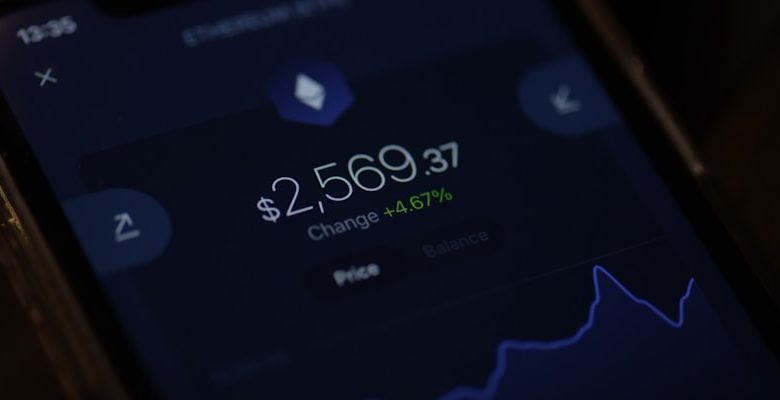The Impact of Macroeconomic Trends on Crypto Prices

- The Relationship Between Inflation and Cryptocurrency Values
- How Interest Rates Affect the Volatility of Crypto Markets
- The Role of GDP Growth in Shaping Crypto Price Fluctuations
- Unemployment Rates and Their Influence on Cryptocurrency Prices
- The Impact of Exchange Rates on the Value of Digital Currencies
- Government Policies and Regulations as Drivers of Crypto Price Movements
The Relationship Between Inflation and Cryptocurrency Values
One of the key macroeconomic factors that can impact the value of cryptocurrencies is inflation. Inflation refers to the general increase in prices of goods and services in an economy over a period of time. When inflation is high, the purchasing power of a currency decreases, leading to a decrease in the value of traditional fiat currencies.
On the other hand, cryptocurrencies are often seen as a hedge against inflation due to their limited supply. Most cryptocurrencies have a fixed supply cap, which means that they cannot be inflated like traditional fiat currencies. This scarcity can make cryptocurrencies an attractive investment option during times of high inflation.
Investors may turn to cryptocurrencies as a store of value to protect their assets from the eroding effects of inflation. As a result, when inflation rates rise, the demand for cryptocurrencies may also increase, driving up their prices. This relationship between inflation and cryptocurrency values highlights the unique position that cryptocurrencies hold in the financial market.
How Interest Rates Affect the Volatility of Crypto Markets
Interest rates play a crucial role in determining the volatility of crypto markets. When interest rates are low, investors tend to seek higher returns in riskier assets like cryptocurrencies, leading to increased trading activity and price fluctuations. On the other hand, when interest rates rise, investors may shift their focus to more stable investments, causing a decrease in trading volume and price stability in the crypto market.
The relationship between interest rates and crypto market volatility is complex and multifaceted. Changes in interest rates can impact the cost of borrowing, the attractiveness of alternative investments, and overall market sentiment. As a result, even small shifts in interest rates can have a significant impact on crypto prices and trading patterns.
It is essential for investors in the crypto market to closely monitor macroeconomic trends, including changes in interest rates, to better understand and anticipate market movements. By staying informed about the broader economic environment, investors can make more informed decisions about when to buy, sell, or hold their crypto assets. Ultimately, the interplay between interest rates and crypto market volatility highlights the interconnected nature of financial markets and the importance of considering macroeconomic factors in investment strategies.
The Role of GDP Growth in Shaping Crypto Price Fluctuations
One key factor that plays a significant role in shaping the fluctuations of crypto prices is the growth of the Gross Domestic Product (GDP). GDP growth is a crucial indicator of the overall economic health of a country, and it can have a direct impact on the value of cryptocurrencies.
When GDP growth is strong, it typically indicates a healthy economy with high levels of consumer spending and investment. This can lead to increased demand for cryptocurrencies as investors look for alternative assets to diversify their portfolios and hedge against inflation.
On the other hand, when GDP growth is weak or negative, it can signal economic uncertainty and lower confidence among investors. In such situations, people may be more hesitant to invest in risky assets like cryptocurrencies, leading to a decrease in demand and subsequent price drops.
Therefore, monitoring GDP growth trends can provide valuable insights into the potential direction of crypto prices. Investors should pay close attention to macroeconomic indicators like GDP growth rates to make informed decisions about their crypto investments.
Unemployment Rates and Their Influence on Cryptocurrency Prices
Unemployment rates play a significant role in shaping the prices of cryptocurrencies. When unemployment rates are high, it indicates a struggling economy, leading to decreased consumer spending and investment. This economic uncertainty often results in a decline in cryptocurrency prices as investors become more risk-averse.
On the other hand, low unemployment rates suggest a robust economy with high consumer confidence and spending. In such times, investors are more willing to take risks, leading to an increase in cryptocurrency prices. The relationship between unemployment rates and cryptocurrency prices highlights the interconnectedness of macroeconomic trends and the crypto market.
It is essential for cryptocurrency traders and investors to monitor unemployment rates as part of their market analysis. Understanding the impact of macroeconomic indicators like unemployment rates can help predict potential price movements in the cryptocurrency market. By staying informed about these trends, traders can make more informed decisions about buying, selling, or holding onto their digital assets.
The Impact of Exchange Rates on the Value of Digital Currencies
The value of digital currencies is heavily influenced by exchange rates in the macroeconomic landscape. Fluctuations in exchange rates can have a significant impact on the purchasing power of cryptocurrencies, which in turn affects their value in the market. When the exchange rate of a fiat currency against a digital currency strengthens, it can lead to an increase in the value of the digital currency in terms of that fiat currency. Conversely, a weakening exchange rate can result in a decrease in the value of the digital currency.
Exchange rates play a crucial role in determining the competitiveness of digital currencies in the global market. A strong exchange rate can make a digital currency more expensive for foreign investors, potentially reducing demand and driving down its value. Conversely, a weak exchange rate can make a digital currency more affordable for foreign investors, increasing demand and boosting its value.
It is important for investors in digital currencies to closely monitor exchange rates and macroeconomic trends to make informed decisions about their investments. By understanding how exchange rates impact the value of digital currencies, investors can better anticipate market movements and adjust their strategies accordingly. Additionally, staying informed about macroeconomic trends can help investors mitigate risks and capitalize on opportunities in the ever-changing world of cryptocurrencies.
Government Policies and Regulations as Drivers of Crypto Price Movements
Government policies and regulations play a significant role in influencing the price movements of cryptocurrencies. When governments announce new regulations or policies regarding the use of digital currencies, it can create uncertainty in the market. This uncertainty often leads to a decrease in demand for cryptocurrencies, causing their prices to drop. On the other hand, positive government announcements can boost investor confidence and drive up prices. For example, when a country legalizes the use of cryptocurrencies or implements regulations that are seen as favorable to the industry, it can result in a surge in prices as more people see digital assets as a legitimate investment option.
Furthermore, government interventions such as crackdowns on illegal activities involving cryptocurrencies can also impact prices. If a government announces stricter enforcement measures against money laundering or tax evasion using digital currencies, it can lead to a decrease in demand and a subsequent drop in prices. Conversely, if authorities take steps to promote the adoption of cryptocurrencies or provide clarity on tax regulations related to digital assets, it can have a positive impact on prices.
In conclusion, government policies and regulations are important drivers of crypto price movements. Investors should closely monitor announcements from regulatory bodies and policymakers to anticipate how these decisions may impact the market. By staying informed and adapting to changing regulations, investors can make more informed decisions about when to buy or sell cryptocurrencies.



